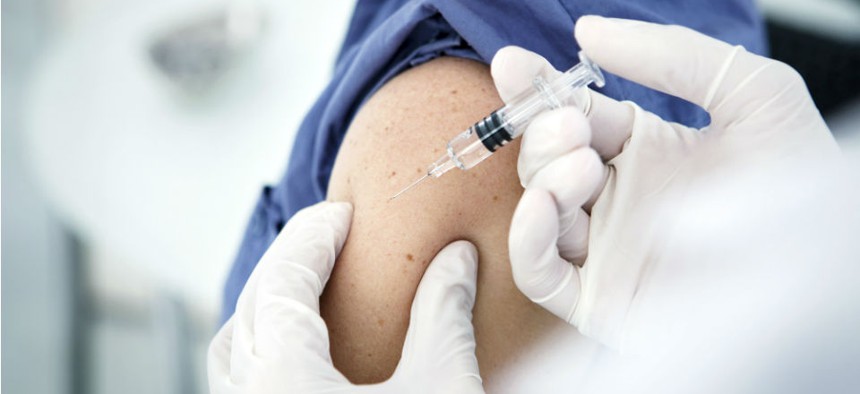
Image Point Fr / Shutterstock.com
The Homeland Security Department Is Not Prepared for a Pandemic
Though the flu is a bigger threat than terrorism, DHS is approaching it with a mix of ineptness and cynicism.
As the Department of Homeland Security endeavors to prevent another 9/11, a terrorist attack that killed nearly 3,000 Americans, it is worth remembering that there are far deadlier threats out there. I speak not of ISIS or Ebola, but the influenza virus. The flu pandemic that began in 1918 killed 675,000 Americans. That is to say, it killed about as many Americans in a couple years as the AIDS virus has in decades. Worldwide, that same flu pandemic killed an estimated 30 to 50 million people. It would take 16,000 attacks like 9/11 to equal that death toll. Those figures powerfully illustrate the case for redirecting some of what the United States spends on counterterrorism to protecting ourselves from public health threats.
Of course, money only helps if it isn't squandered. Take the extra $47 million dollars that Congress gave the Department of Homeland Security in 2006 to prepare for a pandemic. As a recent Inspector General report explains in depressing detail, a lot of that money was wasted. And one darkly hilarious passage in the audit reveals what may be the most galling example of security theater ever.
As background, it's necessary to know how the DHS intended to spend that $47 million. Basically, they went out and bought equipment to help prevent DHS workers from being infected so that they could keep working–stuff like "respirators, surgical masks, gloves, goggles, hand sanitizer, and coverall suits." (The difference between surgical masks and respirators is explained here .) It also stockpiled anti-viral drugs; invested in research; and spent on various planning exercises.
- Before buying equipment and medicine to protect its workers from being infected, the DHS didn't figure out what it needed to purchase or in what quantities.
- The DHS has no clear way of tracking what it bought.
- Though anti-viral medication expires, the DHS "did not develop and implement stockpile replenishment plans" or "sufficient inventory controls to monitor stockpiles." The stuff will go bad and the agency has no set plan to replace it as that happens.
- Much of the equipment the DHS purchased "is past the manufacturers’ date of guaranteed usability."
The incompetence this suggests is frustrating. Yet what really grabbed me when I read the Inspector General's report was a paragraph suggesting some willfully unconscionable behavior. You'll need one bit of jargon: "personal protection equipment," like respirators, surgical masks, and hand sanitizer, are referred to as PPE. With that in mind, I give you this shining example of security theater as a screenshot:

So imagine the scenario. A deadly flu pandemic is beginning in the northeast. TSA agents are asked to report for work in the germ incubators that are airports to keep the transportation system running. And while their bosses in Washington, D.C. can't supply them with reliably functioning respirators to protect them from infection, they're keeping thousands that may not work on hand, thinking they may hand them out for "employee comfort," like security theater karma for those who make us remove our shoes and take our water. Knowing that the U.S. officials charged with protecting us think this way is the opposite of comforting. If a pandemic comes, I advise securing your own respirator.
( Image via Image Point Fr /Shutterstock.com )







